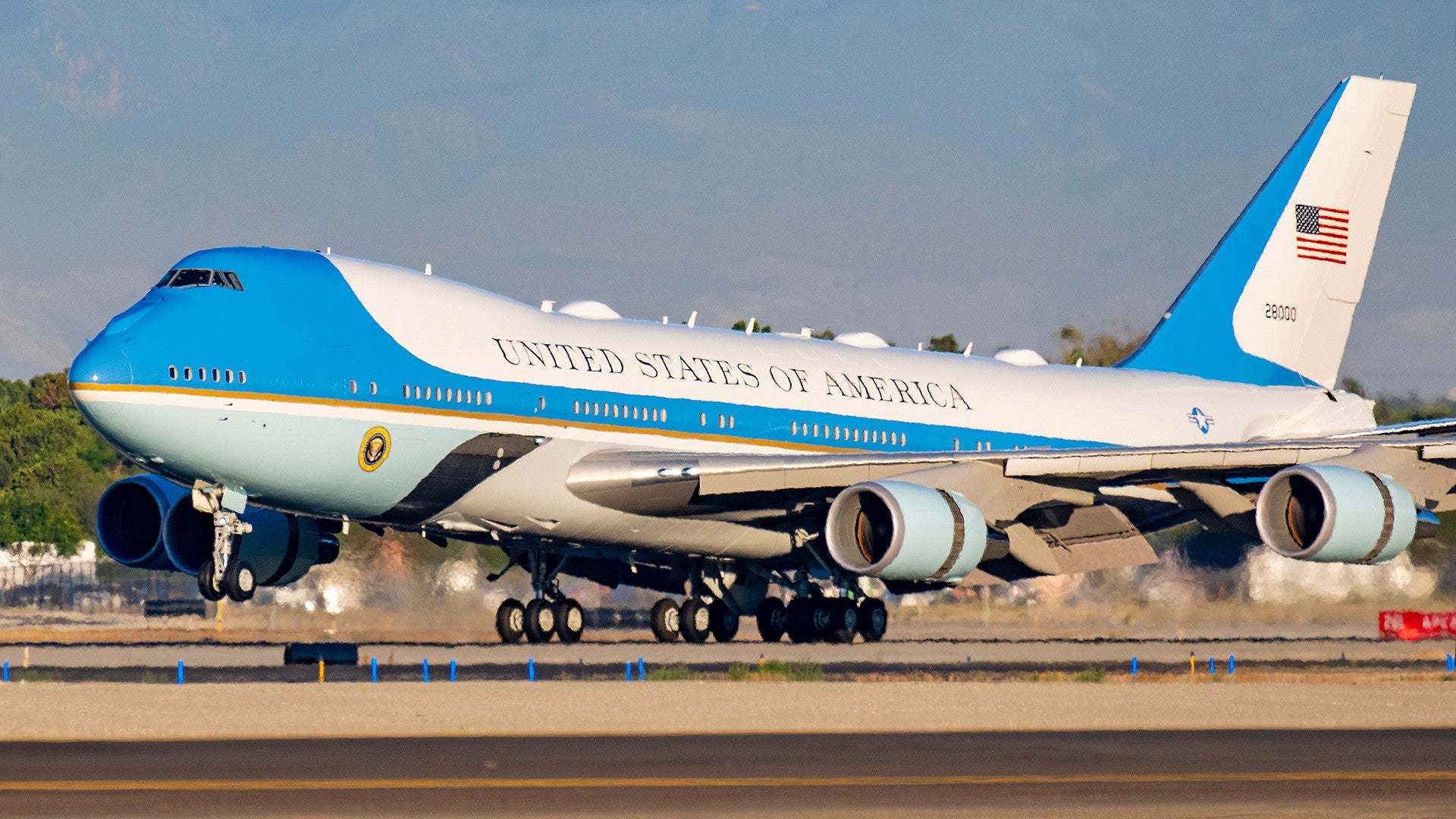The U.S. Air Force has disclosed that the average per-hour flight cost to operate its two VC-25A Air Force One aircraft was $177,843 in Fiscal Year 2021. This was actually down the price point to fly and maintain these highly specialized presidential aircraft as of 2015, which the service had pegged at $206,337.
The War Zone obtained these figures, as well as other fairly granular data relating to the pair of VC-25As and their VC-25B replacements, in response to a Freedom of Information Act (FOIA) request and an official Air Force response to queries regarding those records. The documents that we received through the FOIA process were among the materials assembled for a series of briefings that senior U.S. Air Force and Navy officers gave to then-President-Elect Donald Trump in December 2016.
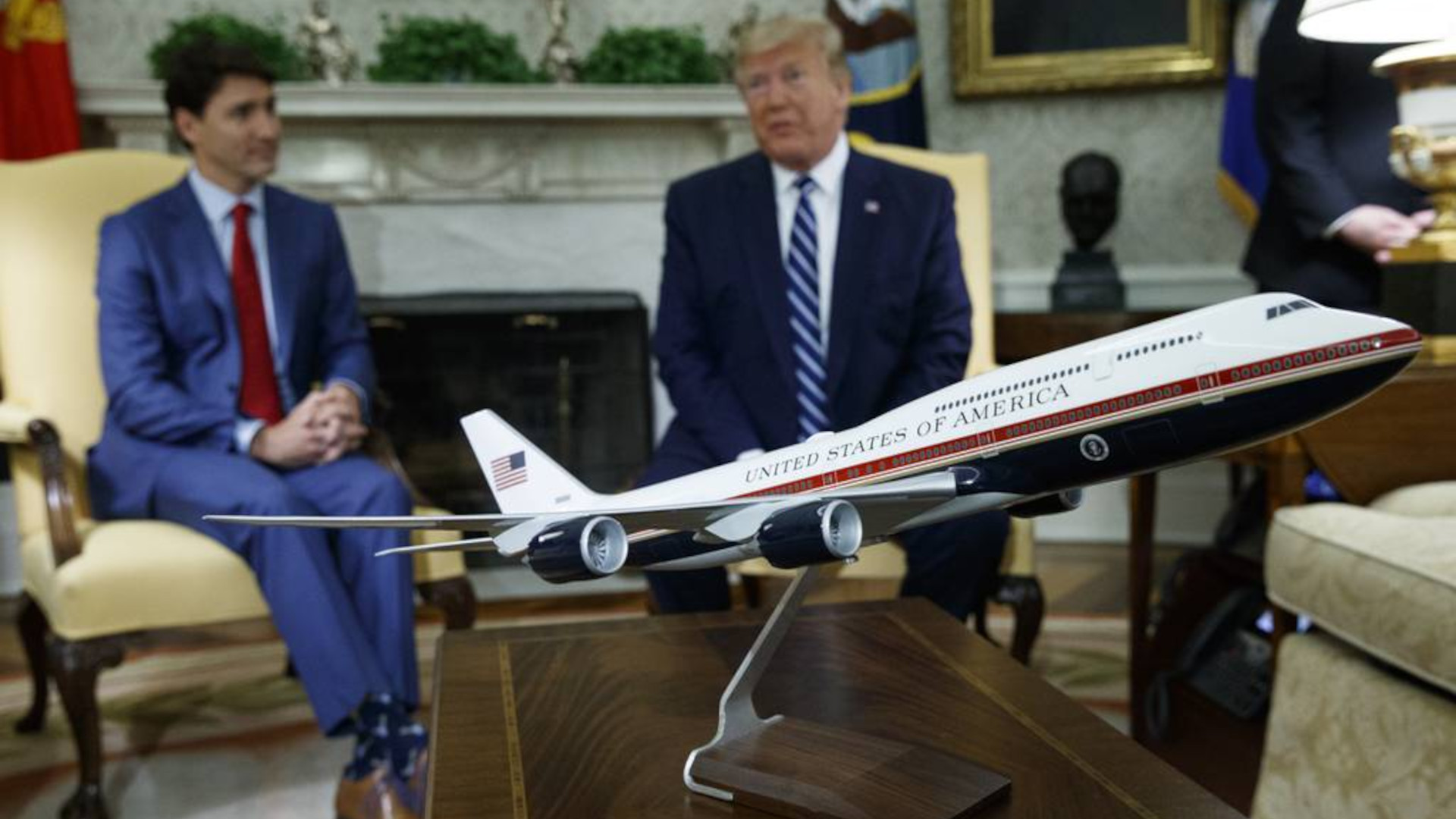
Trump was initially a major critic of the purchase of the two VC-25Bs, the core of what is officially known as the Presidential Airlift Recapitalization (PAR) program, calling at one point for the order to be canceled entirely. He subsequently changed his position after claiming to have secured a better deal. To date, there has been nothing to substantiate his assertions that he was responsible for any reduction in the total estimated costs to acquire and field these new Air Force Ones, which are currently expected to enter service sometime between 2025 and 2026. The two VC-25B aircraft are currently being converted from a pair of Boeing 747-8i Jumbo Jets originally built for a now-defunct Russian airline.
The War Zone reported three years ago on how the Air Force had made the case to Trump for why it needed the new Air Force One jets in part through a detailed discussion of the aging nature of the existing VC-25A aircraft and the increasing costs to operate and maintain them, according to other materials related to the 2016 briefings that we previously obtained via FOIA. The information in the documents we received earlier this year, including the flight hour cost data, further underscores that these factors were key talking points.
“The VC-25A Presidential aircraft are FAA-certified Boeing 747-200 aircraft that were purchased in 1987 and subsequently heavily modified with specialized equipment to execute the Presidential airlift mission. They entered Presidential service in 1990,” according to a set of internal Air Force talking points dated December 2015. “Boeing 747-200 ceased production in 1987 and is no longer operated in U.S. commercial passenger-carrying industry. The AF is the only remaining domestic operator. The only countries flying passenger 747-200s currently are Iran, Nigeria, and Pakistan.”
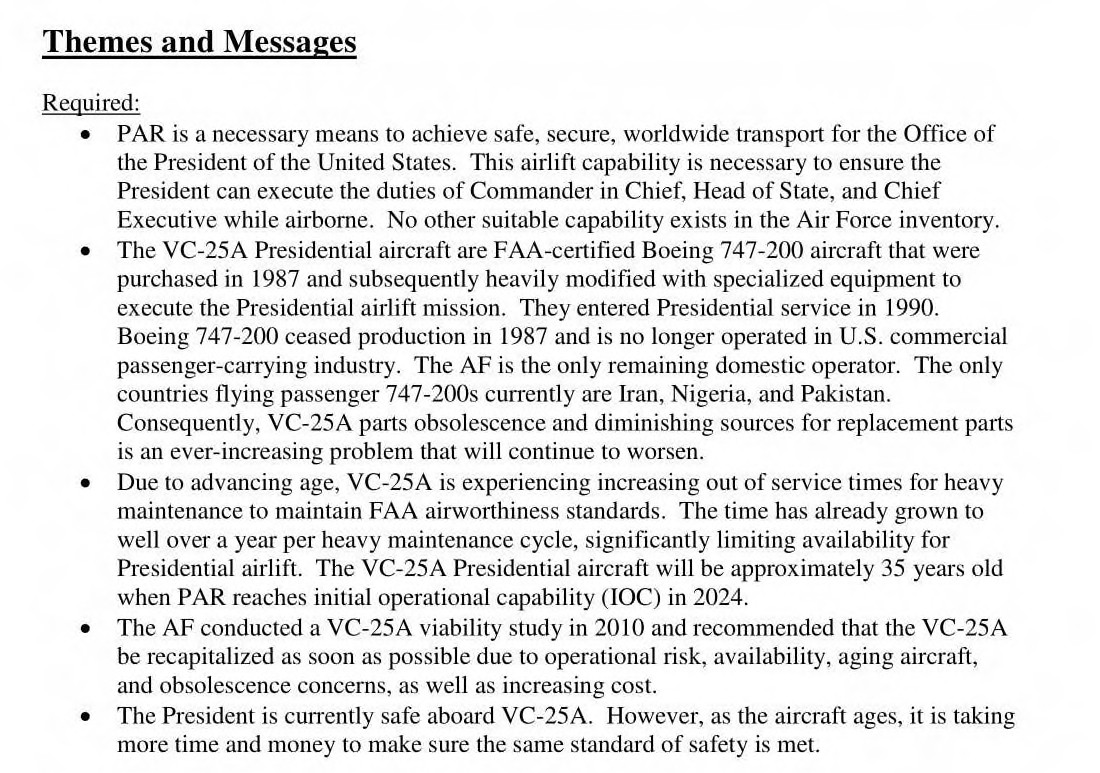
This helps, in part, explain the VC-25A’s $206,337 per-flight-hour cost provided to Trump at that time. It is important to note that it’s not entirely clear what specific time frame that cost calculation applies to. The same figure was released via FOIA to Judicial Watch in 2014 and it’s highly unlikely to have remained completely unchanged between then and December 2015.
In 2013, Time had reported that the cost per flight hour to operate a VC-25A was $161,591. That figure is much closer to the $177,843 per-flight-hour average cost during the 2021 Fiscal Year, which started on Oct. 1, 2020, and ended on Sept. 30, 2021, that the Air Force provided to The War Zone. “This [Fiscal Year 2021] rate includes the cost for fuel, flight consumables and aircraft and engine overhaul,” Ann Stefanek, an Air Force spokesperson, told us.
“No VC-25B estimated cost per flight hour is available at this time,” Stefanek added.
“Compared to the 1980s technologies of the VC-25A, the 747-8 aircraft will utilize modern technologies in aircraft engines, composite materials, aerodynamics, and computer design to improve fuel efficiency while reducing operating costs,” is all the Air Force’s 2015 talking points have to say on what per-flight-hour cost saving might be on the horizon.

Regardless, even at $177,843 per flight hour, the VC-25As are well among the Air Force’s most expensive aircraft to operate. Based on now thoroughly dated flight hour cost data that has been released in the past, the only aircraft the service has that are in the same price range to fly and maintain are the B-2 Spirit stealth bomber and the E-4B Nightwatch airborne command post aircraft. The E-4B, often referred to as a “doomsday plane” for the role it could play in the employment of nuclear weapons in a major crisis, is another very specialized 747-200-based design that the Air Force is currently looking to replace. As of 2020, it reportedly cost the Air Force $130,159 and $159,529 per flight hour to operate the B-2 and E-4B, respectively.
Even other large, aging aircraft, like the Air Force’s B-52H bombers and C-5 Galaxy cargo aircraft, are still tens of thousands of dollars cheaper per flight hour to keep going. The Air Force spent, on average, $70,388 and $100,941 per flight hour to operate the B-52H and C-5, respectively, as of 2020, according to one report.
The Air Force’s December 2015 talking points regarding the VC-25A replacement effort actually specifically address the B-52H cost comparison, as is seen below. “The two VC-25A aircraft are unique to the AF [Air Force] inventory, while hundreds of B-52s were built, with many stored and available for parts,” the document says as part of the explanation as to why it is cheaper to maintain these bombers, the last of which rolled off the production line in 1962, compared to the existing Air Force One jets. A similar logic would apply to the service’s 1980s-era C-5s, the remaining examples of which have gone through a deep upgrade program to include new, more efficient engines, and for which there are numerous retired airframes that can be used as sources for spare parts.

“Consequently, VC-25A parts obsolescence and diminishing sources for replacement parts is an ever-increasing problem that will continue to worsen,” these talking points add. “Due to advancing age, [the] VC-25A is experiencing increasing out of service times for heavy maintenance to maintain FAA airworthiness standards. The time has already grown to well over a year per heavy maintenance cycle, significantly limiting availability for Presidential airlift.”
Separate talking points dated December 2016 say that the average availability rate for the two VC-25As by the end of 2015 was under 21 percent, “a historic low.” Furthermore, that document adds that “Presidential airlift CONOPs [concepts of operations] requires two identical aircraft be available for every mission.” It is, of course, known that both VC-25As are not always available at the same time, though this “two identical aircraft” requirement could refer to other aircraft, such as Boeing 757-based C-32A Air Force Two jets, having to be available on a standby basis.

As with the flight hour cost in the December 2015 talking points, it’s not entirely clear where that availability rate figure comes from.
“A VC-25A aircraft is always available for the President’s use,” was all that Stefanek, the Air Force spokesperson, could tell The War Zone when asked about this particular data point and what the current availability rate for the two VC-25As might be. “Smaller aircraft, like the C-32, may be used for smaller airfields that may not accommodate a 747 aircraft.”
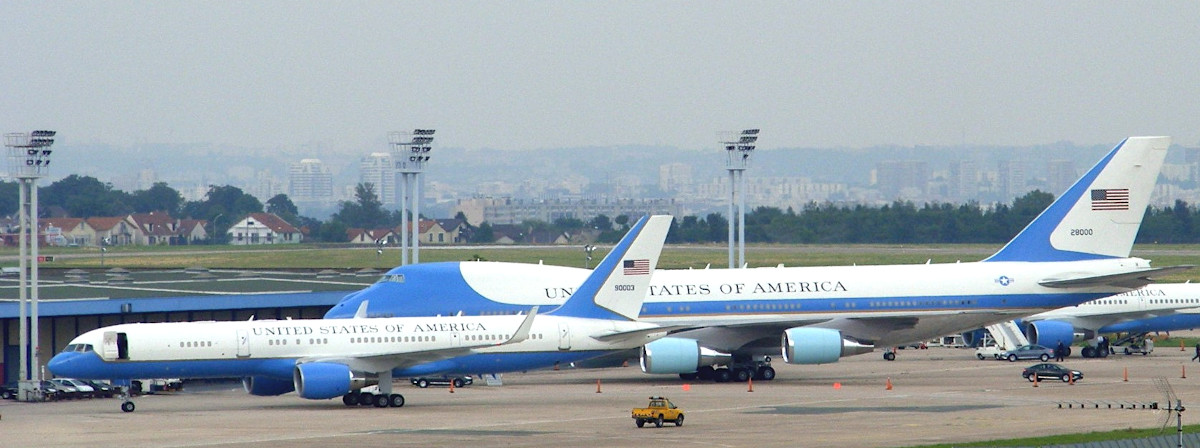
Beyond all this, we do now know that the two VC-25As, which are often referred to by the tail numbers 28000 and 29000, had accumulated at least 9,000 and 8,421 total flight hours, respectively, by the end of 2015. The Air Force could tell us that these figures had risen to 10,030 hours for tail number 28000 and 9,899 hours for tail number 29000 by January 22 of this year. This is an average of around almost 172 hours and just over 246 hours per year across that period for these respective aircraft.
The documents we recently obtained via FOAI provide additional insight into the total costs of the VC-25B program and what the Air Force spent specifically on the two “green” 747-8is that are now being converted into those jets.
“$3.1B was the estimated FYDP [Future Years Defense Program] cost for the program in December 2016,” Air Force spokesperson Stefanek told us when asked about this specific data point. The FYDP is a five-year budget outlay that does not necessarily reflect a total estimated cost of an individual program.
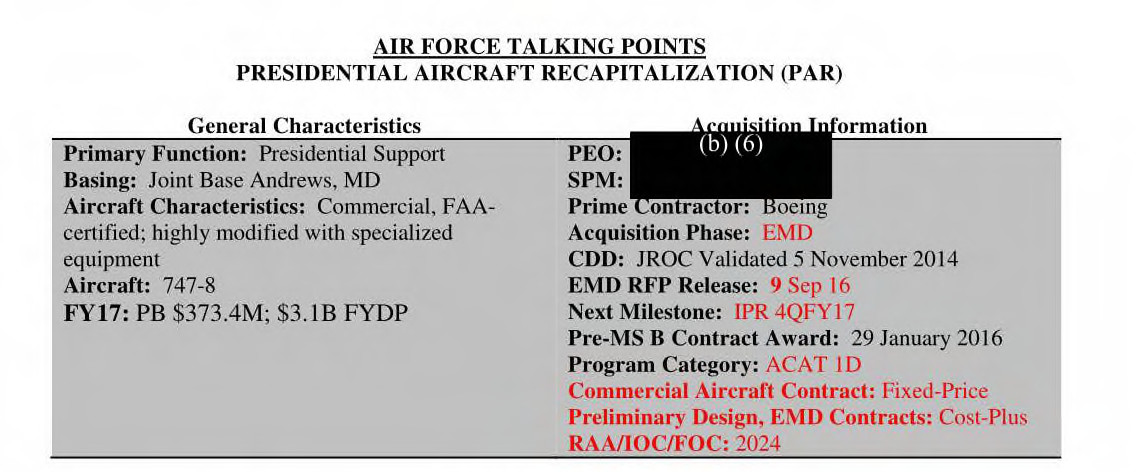
“The total VC-25B acquisition cost, as documented in the Acquisition Program Baseline, is $5.3B and encompasses all costs associated with fielding the system. The total acquisition cost includes the $3.90B fixed-price contract with Boeing to deliver two presidential, mission-ready aircraft,” she added. “The additional costs beyond the $3.90B are for standard work outside of the Boeing contract scope for two aircraft. These include Government testing, initial spares, support equipment, product support, training, and military facilities construction.”
“Military facilities construction” here refers to the construction of a new dedicated hangar facility at Andrews Air Force Base just outside of Washington, D.C. You can read more about this $250 million project here.
The $5.3 billion total figure first emerged publicly in March 2019, at which time it was framed as a cost increase. However, it does not appear to have been previously reported that this figure was the established Acquisition Program Baseline. It’s not clear when that baseline was set, but the Air Force only expected to finalize an initial complete cost estimate in 2016 and then finally awarded Boeing the $3.9 billion fixed-price contract to convert the two 747-8i aircraft in July 2018.

The December 2016 talking points further say that the Air Force expected at that time to spend “approximately $453M for two [747-8] aircraft” for conversion into the new Air Force Ones even though “Boeing has yet to submit a proposal for either the green aircraft or its missionization” and “negotiations for the green aircraft are currently underway between Boeing and the Program Office.” The Air Force would not say what it ultimately paid for the pair of 747-8i aircraft.
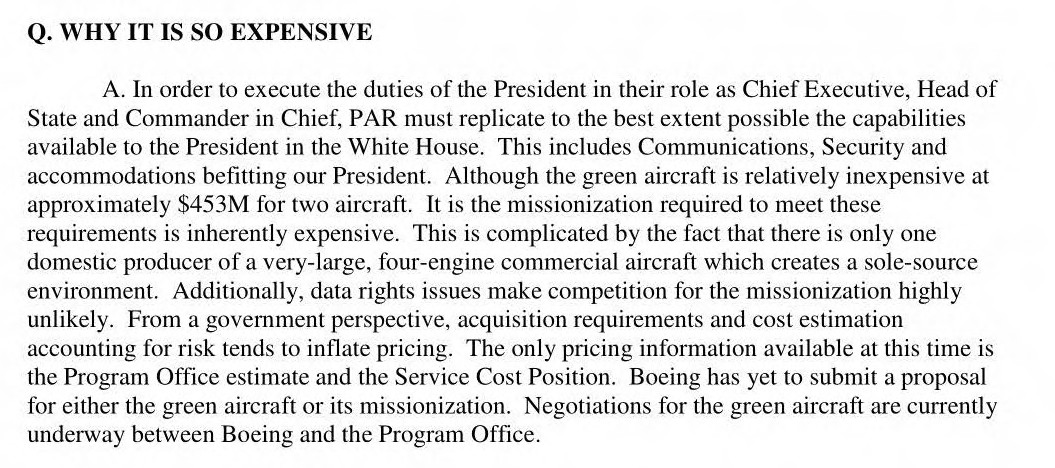
“Because the aircraft were purchased through commercial contracting procedures, the price and other related details are commercial-competition sensitive, meaning the negotiated price paid is not releasable,” Stefanek, the Air Force spokesperson, told us. “However, the price is part of the overall $3.90B fixed-price contract with Boeing to deliver two Presidential, mission-ready aircraft.”
However, if that price point from 2015 is even close to what the Air Force spent on the two aircraft, it would mean that it got a very good deal on these effectively new planes. Boeing currently lists the base price of a single new-production 747-8 airliner at $418.4 million. All of this could only further call in question the long-dubious claims that Trump secured a substantially better deal as a result of a direct meeting with then-Boeing CEO Dennis Muilenburg in 2018. It is possible that the talking points meant that Air Force expected to spend $453 million on each aircraft, but this would have meant the service originally planned to spend significantly more than the list price on these jets.
Oh, and the Air Force did formally rule out using the now-out-of-production Airbus A380, the only other available four-engine aircraft that could meet its requirements, as the basis for a new Air Force One. “The A380 is not a viable option as it is not in the public interest to use an aircraft other than one that is manufactured in the U.S.” for this role, the 2015 talking points state.

You can find the full sets of 2015 and 2016 talking points as they were released to The War Zone
here.
As it stands now, the Air Force expects to take delivery of the first of its new VC-25Bs between 12 and 17 months later than originally scheduled. The service had originally planned to reach initial operational capability with its new Air Force Ones in 2024.
Boeing has blamed the ongoing COVID-19 pandemic and the bankruptcy of GDC Technics, a subcontractor that it had hired to craft the interiors for the new presidential jets, for the delays. Boeing had already canceled its contract with GDC Technics and then initiated legal action against that firm over delays on their part. GDC Technics countersued, claiming that Boeing’s mismanagement was the real issue.
There have certainly been issues on Boeing’s end. Just today, The Wall Street Journal reported that one of the two 747-8is now being converted into a VC-25B was involved in a pair of production mishaps earlier this year. The incidents involved attempting to move the aircraft onto jacks at Boeing’s facility in San Antonio, Texas.
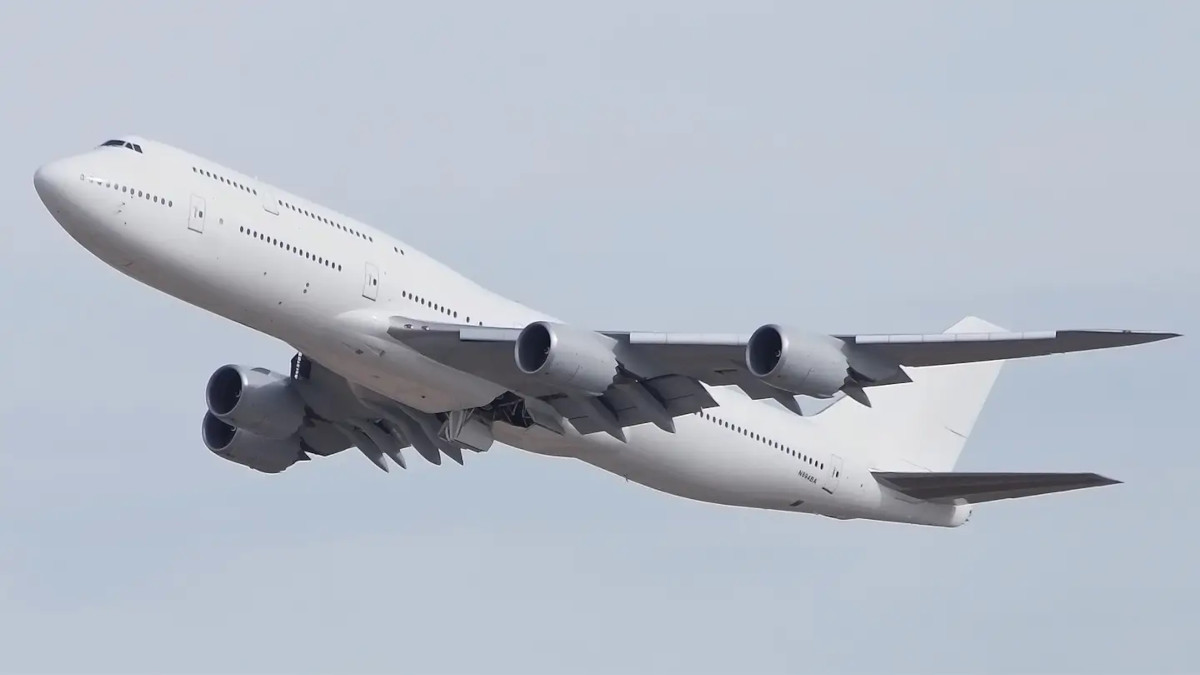
“The U.S. Air Force said the two jacking mishaps didn’t result in any damage to the jet involved,” according to the Journal. “An examination of the mishaps later, however, found that a Boeing employee involved wasn’t properly credentialed for overseeing the work, crews didn’t follow established procedures and another employee involved in the operations failed a routine post-incident drug test, people familiar with the matter said.”
This follows reports last year that two empty mini-tequila bottles were found inside one of the future VC-25Bs. “More recently, another liquor bottle was found outside the production area in San Antonio, people familiar with the matter said,” the Journal reported.
This is hardly the first time that Air Force One-related issues have emerged at Boeing’s San Antonio plant. In 2017, it emerged that personnel there had mixed up parts while making routine repairs to the oxygen system on one of the existing VC-25As, and then had skirted around key safety protocols in an attempt to cover up that error. The incident was uncovered and Boeing had to pay $4 million out of pocket to replace substantial portions of the oxygen system.
It also remains unclear whether or not President Joe Biden’s Administration will change the plans set into motion under Trump to replace the iconic Air Force One paint scheme used on the VC-25As with a new red, white, and blue livery on the new VC-25B.
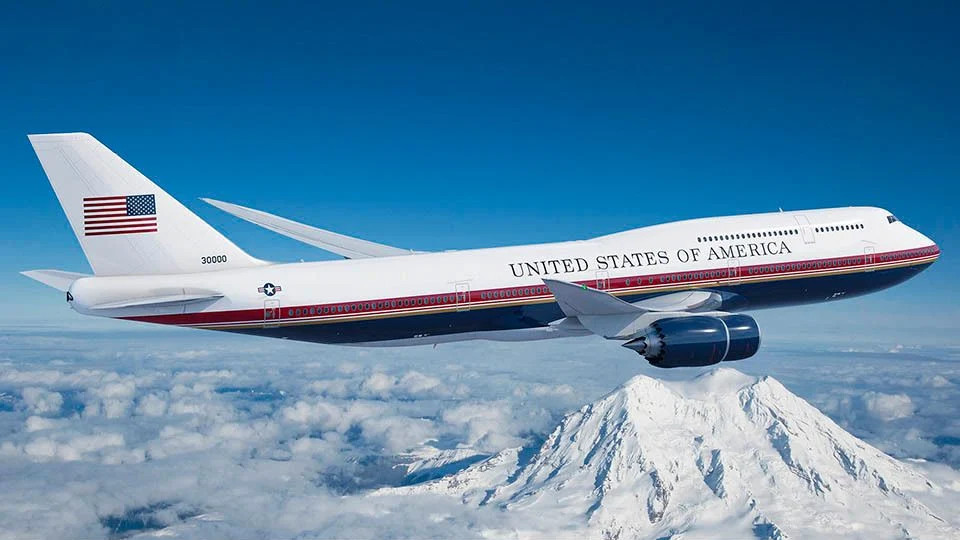
How any of this might further impact the total costs of this program are unclear. Despite being the conversion work being on a fixed-price contract, Boeing could argue for raising the cost ceiling due to circumstances beyond its control, such as the pandemic and its assertion that GDC Technics failed to meet its obligations.
When all is said and done it will certainly be interesting to see how much the Air Force ultimately spent to buy the new VC-25Bs and how much less expensive per flight hour they may be to operate compared to the existing VC-25As.
Contact the author: joe@thedrive.com
